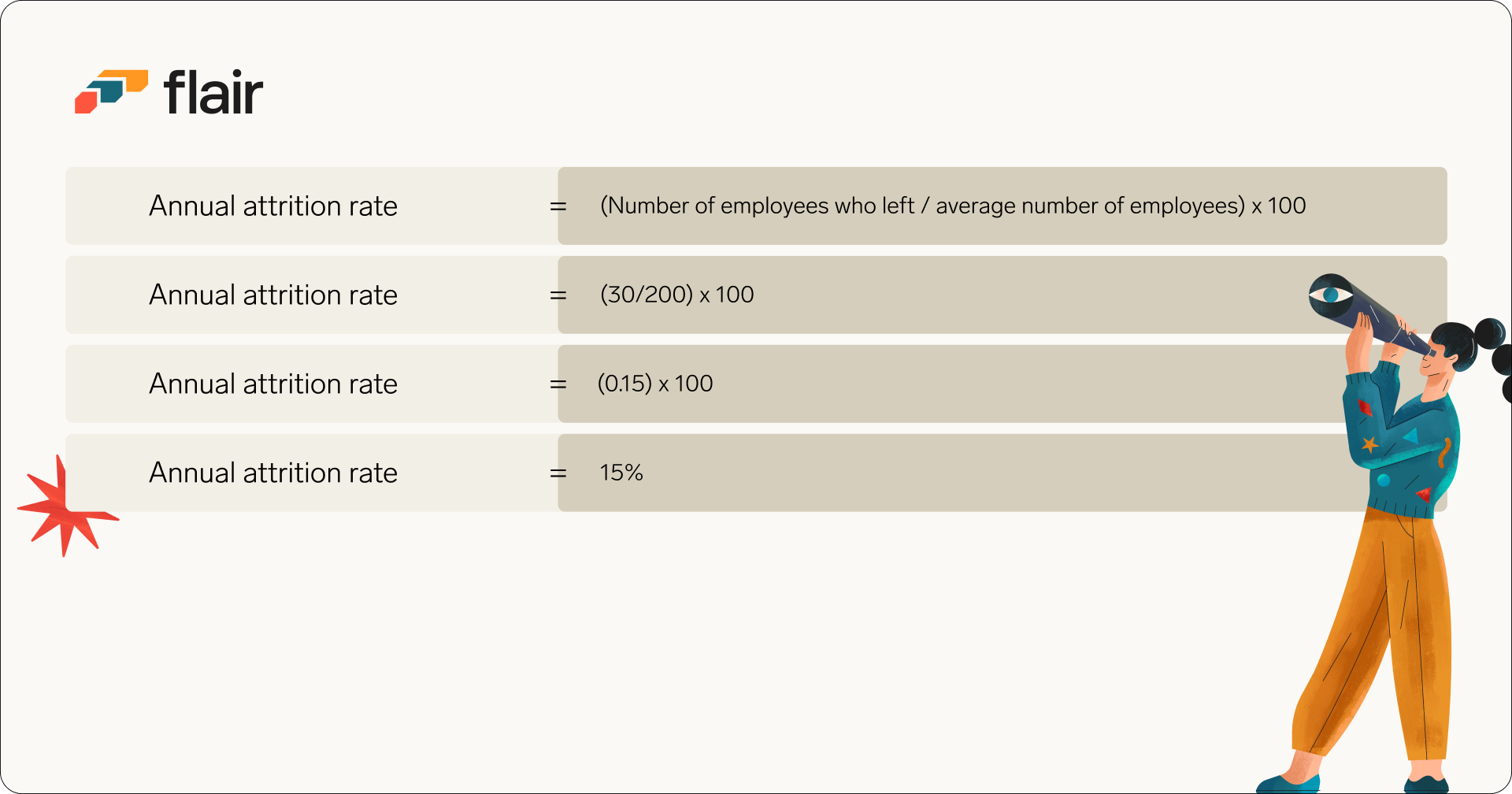Origins to Innovation: Cloud Computing's Impact on HR
Do you know why it's called cloud computing and are you aware of the benefits to HR?
- 06 Jun 2024
- Max 11 min read
The Number One HR Solution on Salesforce
It’s a common business trope to say that “our people are our greatest asset”. And while that may sound trite to some, it could not be more accurate. Regardless of what industry you’re in, the ability to attract top talent is one of the most important components of growing a thriving business. But your job doesn’t stop at recruiting. You also need to retain those employees.
Retaining employees all comes down to your employee satisfaction and your corporate culture. Career development, coworker and customer relationships, and your benefits package are just a few components that make up your corporate culture.
Employee turnover is a growing concern for companies everywhere. That’s why it’s essential to understand your employee attrition rate and how it impacts your business. We think it is one of the most critical human resources metrics to keep an eye on.
However many businesses focus their attention on recruitment and not the retention of employees once they’ve brought them into the organization. This leads to a higher attrition rate and works out to be more expensive in the long run.
In this article, you’ll find out how to calculate your company’s attrition rate, which factors influence it, and what steps you can take to reduce it.
Simply put, the attrition rate (also known as churn rate) refers to the percentage of your staff that leave your organization over a specified period of time. You might hear this referred to as staff turnover or your employee turnover rate.
A high attrition rate means that employees are leaving your company and not being replaced. A low attrition rate, on the other hand, means that your employees are staying for longer. It is an indication of a high retention rate.
The formula for calculating attrition rate is simple. You simply take the number of people (team members) that have left the business and divide it by the average number of employees over that same time period. You then multiply it by 100 to get a percentage.

For example, let’s say your company had an average of 200 employees in a given year. In that same year, 30 employees left the company. To calculate the annual attrition rate, you would take the total number of employees who left (30) and divide it by the average number of employees in the company (200). So your annual attrition rate would be (30/200) x 100 = 15%.
Attrition rates vary depending on company size, industry, and even city. In any case, you’ll want to keep your employee attrition rate as low as possible because that shows that your employees are happy and believe in the company’s vision. A high attrition rate, on the other hand, indicates issues within the work environment and company culture. And finding and training new hires to replace leavers can have a significant impact on your bottom line.
It’s a shame when one employee leaves the company for another opportunity. But when employees start leaving the company all at once, it’s a significant cause for concern. When the rate of attrition starts to rise, it can be a sign of something going wrong internally. Employees might be having bad experiences with management, your company culture might not be engaging enough, or staff might not feel heard on an individual level.
All that being said, be wary of oversimplifying things. There are a number of factors that can influence the attrition rate, and you’ll have to identify them in order to make any sense of the figure.
These terms are often used interchangeably, but there is a slight difference that is worth noting. In simple terms, employee attrition is a long-term concept, while turnover refers to more of a short-term issue.
HR teams usually handle turnover by quickly finding replacements for outgoing employees. Attrition is more of a long-term issue that affects the entire company.
For example, if a company loses five salespeople in one quarter but hires five or more during the same period, this would be considered turnover. However, if that same company only hires one or two replacements, essentially downsizing the sales team, this would be attrition.
There are a number of different things that can influence whether you have a higher employee attrition rate. Some of the more common factors include:
Some of these factors that can play into your attrition rate are a cause for concern, and others are just natural trends that occur within any organization. But how do you know when to be concerned or take action about your attrition rate?
Employees will come and go; that is just a fact. But if it becomes a trend, that is when you should start looking into your workplace environment. Ultimately, some reasons for employee turnover are a cause for concern when they happen en masse, while others are simply part of doing business. Employees switch jobs, retire, and are occasionally laid off — all of this is normal.
It’s when you notice a significant uptick in voluntary resignations, layoffs, or redundancy restructuring that you should begin to pay attention and try to get to the root cause of the issue. Voluntary turnover is the main factor you should be looking at when examining your attrition rate. Unlike retirement or layoffs, voluntary resignations signal that, at some level, your employee was not happy at the company.
There are, of course, natural factors such as relocation, having children, or switching career paths that you simply cannot control. But employees who consciously leave your company for a similar role at another company are always an opportunity for introspection.
Were they leaving because they were offered a better salary elsewhere? Perhaps you should check that your salary is competitive with the rest of your industry. Were they leaving because another company offered them better benefits? It might be time to rethink your benefits package.
Either way, you should treat employees' voluntary resignations as learning opportunities. One employee leaving can give you the chance to closely inspect your offerings and make sure that they are competitive before more employees leave for the same reason.
Another essential factor to consider when inspecting your attrition rate is demographics. If you see an uptick in your attrition rate, try to narrow it down to the demographics leaving the organization the most. For example, you might find that millennials voluntarily resign the most often. And by surveying your staff, you might find that young employees feel overshadowed or not valued compared to the more senior employees.
One specific demographic leaving the organization at an alarming rate is undoubtedly cause for concern. It could be an indicator of a workplace culture that is not inclusive enough and makes certain employees feel unhappy and disengaged. This calls for diversity training and perhaps even a rethink of your company culture and code of conduct.
On the other hand, is a high attrition rate always a bad thing? It depends on how you look at it and if your company is undergoing large-scale organizational change. Restructuring may be necessary for some companies to stay competitive, and it can even revitalize the business. Indeed, some companies with extremely low attrition rates risk becoming ‘set in their ways’ and stagnating. While retaining high-performing employees should be a priority, new hires can also bring fresh perspectives that help the company innovate and grow.
It’s essential to strike a balance between experienced, long-serving members of staff and promising new talent. Your business needs to be able to change and adapt, while avoiding the ‘revolving door’ that high turnover brings.

Let’s talk more about why your attrition rate matters and when you should take action to improve it.
What does your attrition rate tell you about your company? All of the employee satisfaction surveys in the world can’t tell you as much about your company as your attrition rate can. It is a clear indicator of your success as an organization and how happy employees are (or aren’t) working there.
Holding on to your best employees will not only ensure you have an experienced team, but it will also save you money. With the cost of hiring a new employee being so high, turnover can impact your bottom line. That cost adds up fast if you have a lot of turnover.
Another primary reason employee turnover hurts companies is that no matter how good the transition process is when an employee leaves the company, some of their wealth of knowledge about the company goes with them. It’s not easy to train a new employee to learn all about the company, and it takes years to become a complete expert on the ins and outs of a business.
That is invaluable information that you lose when an employee leaves, and it will hurt not just the company but that employee's team and closest coworkers. They’ll be forced to pick up the slack while the new person is trained, and that can be stressful for everyone if it happens too often. Overburdening employees is a significant factor in employee turnover. In that way, one employee leaving can cause a ripple effect as other close coworkers decide to leave too.
That’s why it’s vital to be aware of your attrition rate. Whether your attrition rate is high or low, you need to track that number to ensure your company’s growth and overall success. So, what can you do to bring down your annual churn rate as an organization? Let’s talk about it.
Employees spend a considerable chunk of their lives at work, so it is crucial to cultivate an environment that they enjoy being in every day. Whether remote or in person, everyone wants their employees to be as happy and productive as possible while working. So what do you do if you notice your employee attrition rate is rising? Or if you use an attrition rate calculator and find that you’re losing employees faster than you can replace them?
The only sustainable way to reduce your annual churn rate is to improve the working conditions for your employees to keep them satisfied. But that is easier said than done. In the same way that you improve your customer experience to keep your customer churn rate low, a great employee experience can help reduce attrition.
Did you know that employees are the most likely to leave within their first year at their job? That highlights the importance of a smooth and effective employee onboarding process that makes your new hires feel appreciated and at home right away.
With record inflation, wage rises are the main reason for employees seeking new jobs. But that’s only part of the picture, with career advancement, remote-work flexibility, and employee well-being programs also playing a considerable role.
Your employees will work harder and stay longer when they have a defined career path and a set time period for advancements and raises. It's all about clear communication and transparent leadership.
Over an extended time period, employees are ultimately going to stay because they enjoy working there and believe in what the company is trying to achieve. This, combined with increased support and communication from management, can make all the difference in your employee’s happiness.
Here are some other ideas for improving your company culture and your employee’s overall experience:
Those are just some examples of what you can do to keep employees satisfied – but all of this needs to be informed by real data you’re collecting from those employees who are leaving.
The infamous exit interview. HR professionals can use these meetings to pick the brains of their most recent employees who are leaving the organization. Exit interviews are the best time to ask the right questions about employee wellness and satisfaction. This will be your last chance to get their honest opinion before they are gone.
Ask them what has impacted their decision to leave the company and listen to their responses closely. This is your best hint at how you can improve your work environment. As such, it’s imperative that you offer each employee a proper exit interview to ascertain why they are leaving and whether that points to other things within your organization that can be improved.

Here are some examples of questions that you can ask employees to gauge their overall happiness with the company before they leave their position.
They might not always tell you the whole story, but make sure to be clear that you are just looking for input and that your response to their feedback is encouraging and positive. If they aren’t willing to share much, don’t worry.
On the flip side, you might find that employees become more honest and open during their exit interview now that they aren’t planning on being with the company any longer. This information can be your roadmap to improving employee morale and satisfaction. Use it wisely.
Reducing your annual attrition rate can improve your business and your company culture. By now, you have all the information and tools you need to determine your attrition rate, get to the root cause of your employee turnover, and improve employee retention.
To reduce your attrition rate, you can adjust your company culture, raise salaries, and take small steps to improve your employee experience. But sometimes, you have to go way beyond that and make significant structural changes for the good of your organization.

Follow our step-by-step guide to reduce staff turnover and retain your best employees in the long term.
As we’ve learned recently, company culture is more than snacks in the break room and a dog-friendly workplace. Employees love perks, but you have to work harder than that to keep the good ones around. Clear communication and good management practices can help you retain employees longer and foster a productive and happy work environment.
Suppose you can get a handle on some of the principles above, improving career development and creating a working environment that employees love to be a part of. In that case, you’ll be able to lower your employee attrition rate and improve stability within your organization. Your employees and managers will thank you, and your business will run smoother and more efficiently. You’ll likely see a direct link between lowering your attrition rate and rising sales and success within your company.
It might just be the secret recipe that takes your company to the next level.
Join flair’s newsletter to receive the latest tips & trends in the HR world.

